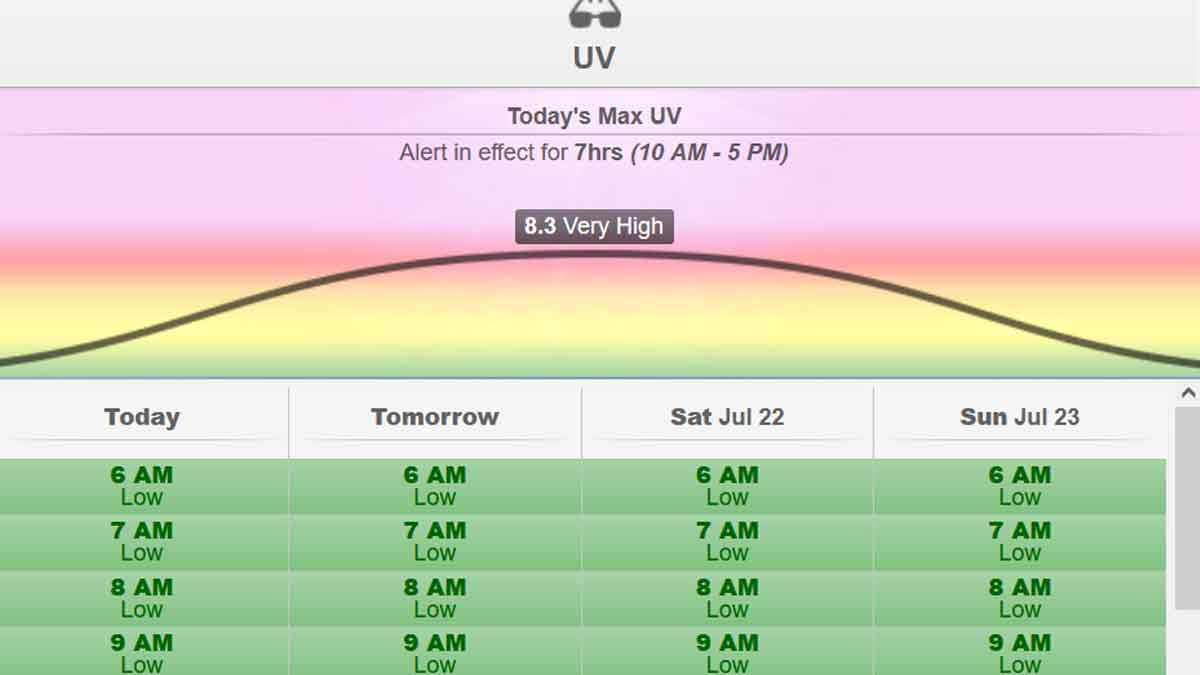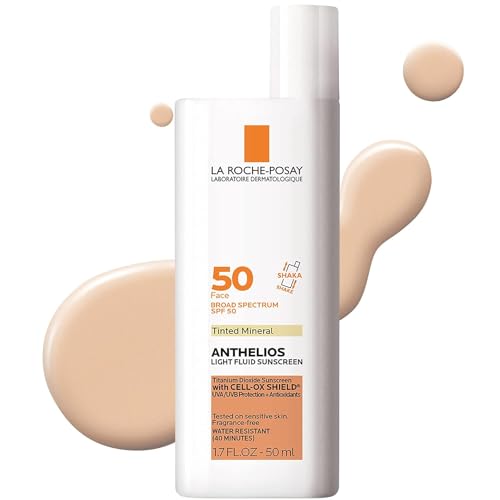Enter your location in the search bar below, for your local UV index, for today and the next 3 days.
UV Index Today: A standardized system developed by the World Health Organization (WHO) and the World Meteorological Organization (WMO) to quantify ultraviolet radiation strength at your specific location and time.
More from Glowing Gorgeous: Find out here the Best Silicone-Free Moisturizers And Why Do You Care
The UV Index serves as a vital tool in understanding these risks and determining the necessary precautions to protect ourselves from the harmful effects of excessive sun exposure.
Source: the EPA.
UV Index Scale
0 to 2: Low (green)
When the UV Index is at this level, you can enjoy the outdoors without major concerns. Minimal sun protection is required. However, it’s always a good habit to wear sunscreen with a low SPF, and if possible, cover up with light clothing.
Don’t forget: in winter, reflection off snow can nearly double UV strength.
3 to 7: Moderate (yellow and orange)
As the UV Index rises to moderate or high levels, it’s time to take precautions. Seek shade during the late morning through mid-afternoon when the sun is at its strongest. If you’re outside, apply broad-spectrum sunscreen with an SPF of 15 or higher on all exposed skin. Don’t forget to wear protective clothing, a wide-brimmed hat, and sunglasses to shield yourself from the sun’s rays.
8+: Very High to Extreme – Extra Protection Needed (red)
With the UV Index reaching very high to extreme levels, exercising extra caution is crucial. Avoid prolonged exposure to the sun, particularly during late morning through mid-afternoon when UV radiation peaks. Seek shade whenever possible, and ensure you’re wearing protective clothing, a wide-brimmed hat, and sunglasses to minimize UV exposure. Generously apply sunscreen with an SPF of at least 15 on all exposed skin to keep it well-protected.
Please note: white sand on the beach will reflect UV rays and can double UV exposure.
The Shadow Rule:
An easy and practical way to assess your UV exposure is by observing your shadow:
- If your shadow is taller than you (early morning and late afternoon), your UV exposure is relatively lower, and the sun’s rays are less intense during these times.
- If your shadow is shorter than you (around midday), it indicates higher levels of UV radiation. This is when the sun is at its peak, and UV exposure is most intense. Take extra precautions during this time by seeking shade and ensuring your skin and eyes are adequately protected.
FAQ’s
1. What is the UV Index, and why is it essential to check it daily?
The UV Index is a measurement that indicates the strength of ultraviolet radiation from the sun at a specific location and time. Checking the UV Index daily is crucial because it helps you understand the potential health risks associated with sun exposure. By being aware of the UV Index, you can take appropriate sun protection measures to safeguard your skin and overall health.
2. How does the UV Index affect my skin and health?
The UV Index directly impacts your skin and health. Higher UV Index values mean more intense UV radiation, increasing the risk of sunburn, premature aging, and skin cancer. Prolonged exposure to high UV levels can also weaken the immune system and cause eye damage. Adhering to sun protection guidelines based on the UV Index can minimize these risks significantly.
More from Glowing Gorgeous: Find out here Hyram’s Recommended Face Sunscreens For The Summer
3. What sun protection measures should I take based on the UV Index levels?
The sun protection measures vary depending on the UV Index levels:
Low (0 to 2): Minimal protection needed. Use sunscreen with low SPF, and covering up is optional.
Moderate to High (3 to 7): Seek shade during peak sun hours, wear broad-spectrum SPF-15 or higher sunscreen, protective clothing, a wide-brimmed hat, and sunglasses.
Very High to Extreme (8+): Take extra precautions, especially during peak hours. Seek shade, wear protective clothing and accessories, and apply SPF-15 or higher sunscreen generously on exposed skin.
4. Is the UV Index relevant on cloudy days or during winter?
Yes, the UV Index is relevant on cloudy days and during winter. Although clouds can filter some UV radiation, significant amounts can still penetrate and cause harm. Additionally, snow can reflect UV rays, increasing the risk of sunburn. Therefore, monitoring the UV Index and practicing sun protection are essential year-round.
5. How can I use the Shadow Rule to gauge my UV exposure?
The Shadow Rule is a simple way to estimate your UV exposure:
If your shadow is taller than you (early morning and late afternoon), your UV exposure is relatively low.
If your shadow is shorter than you (around midday), your UV exposure is high, and you should seek shade and protect your skin and eyes from the intense UV radiation.
6. How bad is 12 UV?
A UV Index of 12 is considered extremely high, indicating an exceptionally intense level of UV radiation. At this level, the risk of sunburn and other adverse effects on the skin and health is significantly elevated. It is crucial to take extreme precautions during such conditions, including seeking shade whenever possible, wearing protective clothing, sunglasses, and a wide-brimmed hat, and applying a high SPF sunscreen frequently to exposed skin.
7. Can you burn in UV 1?
While a UV Index of 1 is classified as low, indicating minimal UV radiation, it is still possible to experience sunburn under these conditions, especially if the exposure is prolonged or the skin is particularly sensitive to UV rays. Though the risk of sunburn is lower at UV Index 1 compared to higher levels, it is essential to practice some sun protection, such as applying sunscreen with at least low SPF and wearing protective clothing, to reduce any potential harm to the skin.


 La Roche-Posay Anthelios Mineral Sunscreen Gentle Lotion Broad Spectrum SPF 50,...
La Roche-Posay Anthelios Mineral Sunscreen Gentle Lotion Broad Spectrum SPF 50,... COOLA Organic Sunscreen SPF 50 Sunblock Body Lotion, Dermatologist Tested Skin...
COOLA Organic Sunscreen SPF 50 Sunblock Body Lotion, Dermatologist Tested Skin... La Roche-Posay Anthelios UV Correct Sunscreen Moisturizer SPF 70, Daily...
La Roche-Posay Anthelios UV Correct Sunscreen Moisturizer SPF 70, Daily...
 La Roche-Posay Anthelios Melt-In Milk Body & Face Sunscreen SPF 60, Oil Free...
La Roche-Posay Anthelios Melt-In Milk Body & Face Sunscreen SPF 60, Oil Free... La Roche-Posay Anthelios Tinted Sunscreen SPF 50, Ultra-Light Fluid Broad...
La Roche-Posay Anthelios Tinted Sunscreen SPF 50, Ultra-Light Fluid Broad... innisfree Daily UV Defense Sunscreen Broad Spectrum SPF 36 Face Lotion, 1.69 Fl...
innisfree Daily UV Defense Sunscreen Broad Spectrum SPF 36 Face Lotion, 1.69 Fl...
Comments